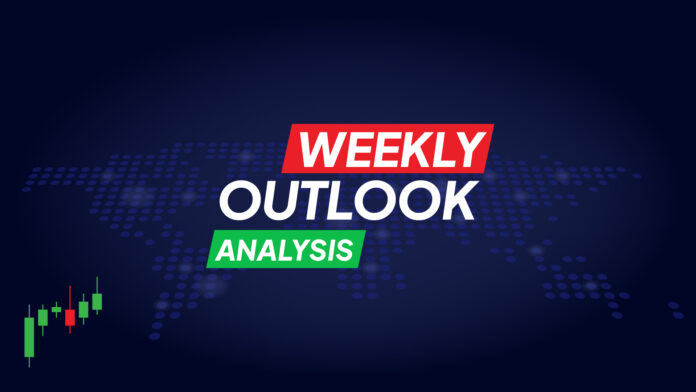Key points to watch out for:
- French parties struggle to block Le Pen’s RN
- Powell testifies before the Senate Banking Committee
- US CPI data to shake up Fed rate cut bets
- RBNZ won’t touch OCR and will focus on financial markets
Euro Investors Are Keeping an Eye on the French Elections
Currency market traders will be on the edge of their seats on Sunday, in anticipation of Monday’s opening and the impact the second round of the French election will have on the market.
The far-right National Rally (RN) party led the first round the previous weekend, although the left-wing New Popular Front (NFP) party was not far behind. The result also showed that RN and its allies won first place in 296 out of 577 constituencies, which could mean an overall majority in the second round.
However, the left and center parties allied and decided to withdraw their candidates in the constituencies where there is a three-way runoff, in an attempt to increase their chances of preventing RN from leading the government.
The outcome of the European parliamentary elections showed that the Eurosceptic parties hurt the single European currency, so the coordinated attempt to stop Le Pen’s march is seen as positive.
However, even if the left-wing alliance secures victory and the euro rises on Monday, the anxiety will not go away, as investors will remain concerned about whether this can lead to a stable government.
In addition, there is a possibility of a hung parliament, in which a minority government will have trouble passing legislation. This could lead to prolonged political paralysis, as no elections can be held for up to 12 months. However, if the minority government is led by RN, it may not be so bad for the euro, as the other parties may do their best to block its Eurosceptic agenda.
Bets Increase on Fed Rate Cut to Dent US Dollar
In the U.S., Federal Reserve Chairman Jerome Powell will testify about economic estimates and the latest monetary policy actions before the Senate Banking Committee. The Fed Chairman will present a prepared statement and then the committee will have the opportunity for a question-and-answer session.
Last week, at the ECB’s central banking forum in Sintra, Powell stated that they are returning to “the path of disinflation,” although he added that they want to be more confident about inflation returning to their 2% target before they begin to ease monetary policy at home.
His comments were taken as an affirmation of the market’s view that two quarter-point rate cuts may not be supported this year, although the Fed’s dot plot points to just one. Moreover, after June’s disappointing ISM PMIs, the likelihood of the first cut in September has risen to about 80%.
Although it is unlikely that Powell will change much of what he mentioned in Portugal, the Q&A session may bring more concrete questions that serve to provide greater clarity about the Fed’s plans.
However, even if he reiterates that there is no urgency to initiate the rate cut, any significant changes in market prices could depend more on the CPI result due on Thursday, July 11.
Bearing in mind that all price sub-indices of the ISM manufacturing and non-manufacturing PMI surveys fell, the risks to CPI could be skewed to the downside. A further slowdown in inflation could help convince more market participants to place bets on two Fed rate cuts by December and thereby exert weight on the US dollar.
Kiwi Investors May Welcome the RBNZ’s Bullish Stance
Also prominent on this week’s agenda is the Reserve Bank of New Zealand (RBNZ) meeting. During the Asian session on Wednesday, July 10, the RBNZ will announce its decision regarding its monetary policy, although no change in interest rates is expected. There is only a small 5% chance of a rate cut of 25 basis points.
During its last meeting, held in May, the Bank stated that it was necessary to keep monetary policy tight to ensure that inflation would return to target and, more importantly, discussed the possibility of raising interest rates.
First-quarter retail sales have been better than estimated, while GDP data have shown that the economy grew more than estimated during that period.
Although inflation figures were not released, the aforementioned data confirm the Bank’s tightening stance.
Nevertheless, investors expect rate cuts of around 40 basis points by the end of the year. Given that the RBNZ has little reason to shift to a less hawkish stance, a reiteration of the May message could lead investors to reduce rate-cut bets, which would support and boost the New Zealand dollar.
New Zealand dollar traders, along with Australian dollar traders, will also be looking ahead to Chinese CPI and PPI data due later in the day, half an hour before the RBNZ decision.
UK and Sterling Data After the Elections
In the UK, with the general election over, pound traders can turn their attention back to economic releases. On Thursday, July 11, the monthly GDP for May and industrial and manufacturing production figures for the month will be released.
With the Labour Party securing the largest share in Parliament, the Bank of England could signal a slowdown in its easing process in the face of estimates of a much more fiscally responsible government, which could be negative for sterling in the medium term. All in all, it is unlikely that the improvement in GDP during May will significantly change market estimates regarding the Bank of England’s plans.



